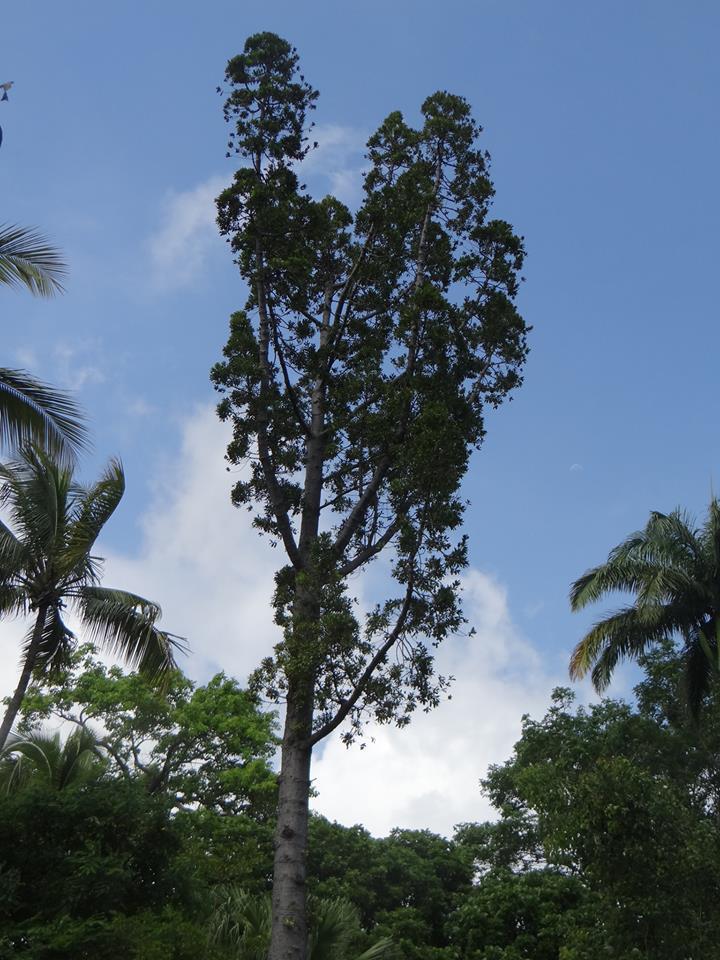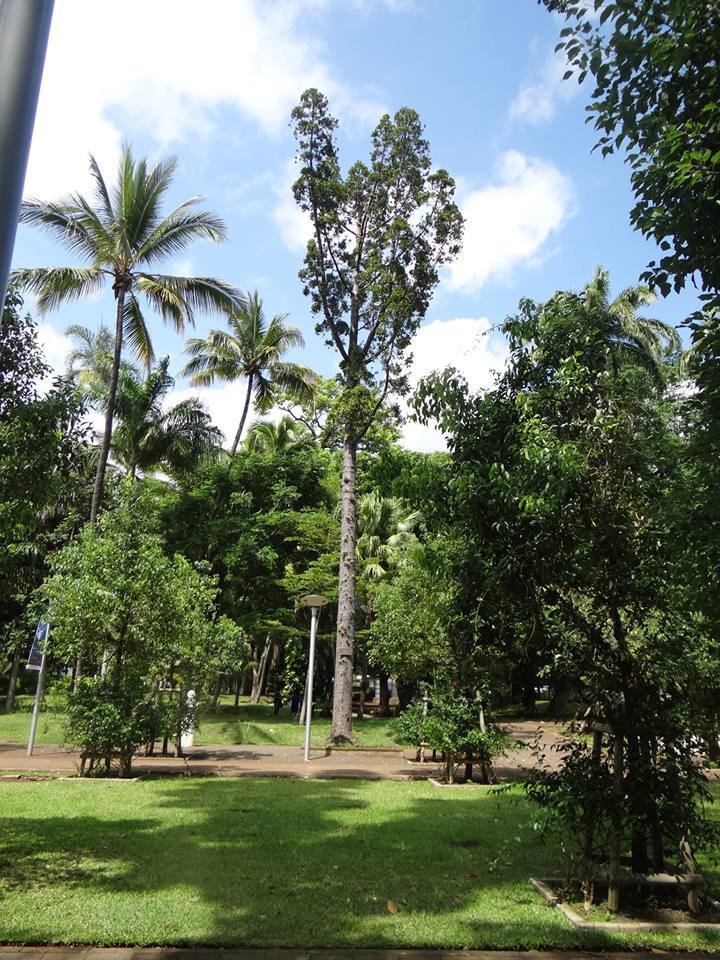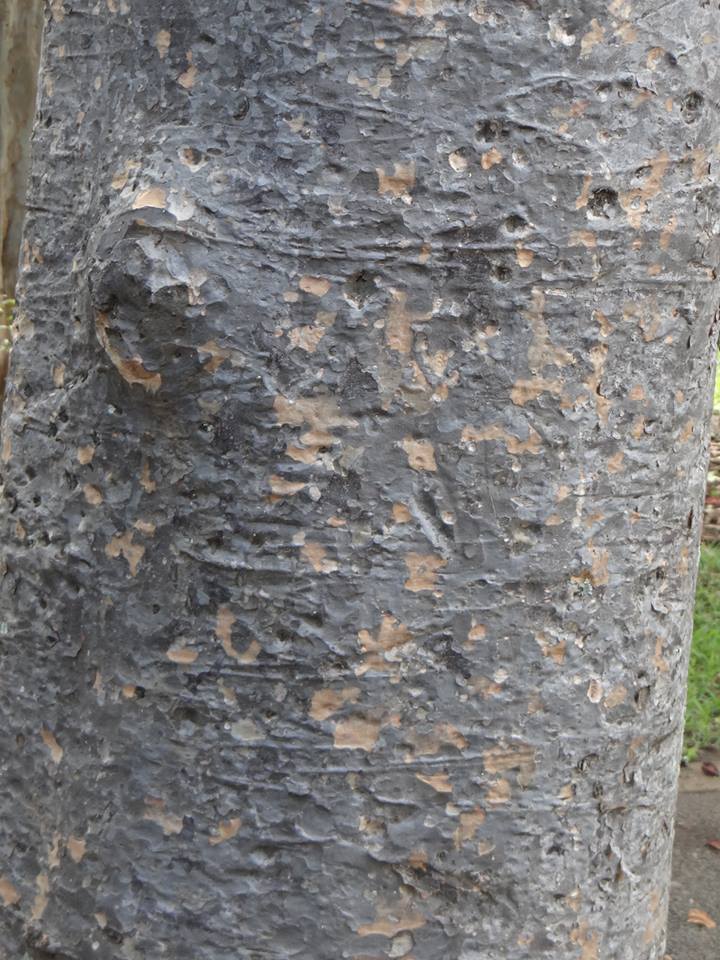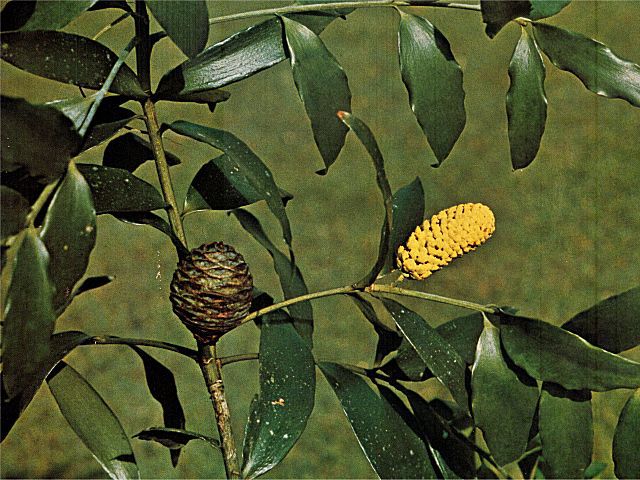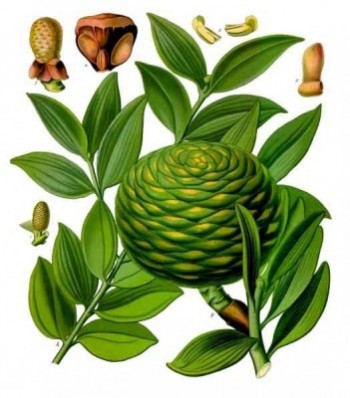
Agathis dammara, first described in research by Aylmer Bourke Lambert (1761-1842), continued by Louis Claude Marie Richard (1754-1821) and finally completed in 1826 by his son, Achille Richard (1794 - 1852). It is commonly known as:
Description. Celebes kauri is an evergreen coniferous timber tree native to the Moluccas, Celebes and the Philippines. It is a medium-large conifer up to 180 feet (60 m) in height found in tropical rainforests, it can grow at sea level on up to very high mountainous regions where it becomes extremely stunted. It belongs to the southern hemisphere family Araucariaceae, widespread throughout the entire Mesozoic, emerging about 200 million years ago. An extinct genus, Protodammara (which appeared long ago, during the Mesozoic), derives its name from this tree. This tree is a source of dammar gum, also known as cat-eye resin.
Mature trees follow the usual Agathis model of a long clear bole with a broad emergent crown of large rigid first-order branches. The authorities differ in opinion about the bark, calling it gray, red-gray, light brown, or black, finely dimpled to thinly scaly or with many resin blisters, or rough, exfoliating thus with few epiphytes. Leaves are sub-opposite, thick, coriaceous, light to dark green in color, and highly variable even on a single tree. On young trees the leaves are lanceolate, acuminate, 1.2 by 2.8 inches (3 x 7 cm) to 1.4 by 5.2 cm (3.5 x 13 cm). On adult trees the leaves are long-oval with a rounded apex, 1.6 to 3.2 inches (4 - 8 cm) by 0.6 to 1.2 inches (1.5 - 3 cm), with a 0.04 to 0.3 inch (1 - 8 mm) petiole. Pollen cones are axillary and solitary on a stout ca. 0.14 inch (3 - 4 mm) peduncle, with a firm, smooth surface; 0.5 to 1.2 inches (12 - 20 mm) long by ca. 0.28 inch (6 - 8 mm) in diameter. Female cones are globular or ovoid, 2.2 to 4.8 inches (5.5 - 12 cm) long by 2 to 3 inches (5 - 7.8 cm) wide with nearly triangular cone scales and broadly rounded, thin, upper corners. Seed are subovoid, to 0.6 inch (1.5 cm) long with one wing to 0.5 inch (1.3 cm) long with another that is much shorter.
Distribution. This species is native to the Philippines; Indonesia - the islands of Sumatra, Java, Borneo, Celebes, Moluccas. E.J.H. Corner in his 1988 study, Wayside trees of Malaya also places this species in Vietnam and New Guinea, but no one else mentions this; he may be lumping it with other species of Agathis. The elevation range appears to be from 650 to 8,000 feet (200 - 2500 m) above sea level, occurring on podsolized sands and limestones, from which it is inferred that it can accept a wide range of silicate and carbonate substrates, though perhaps not ultramafics.
